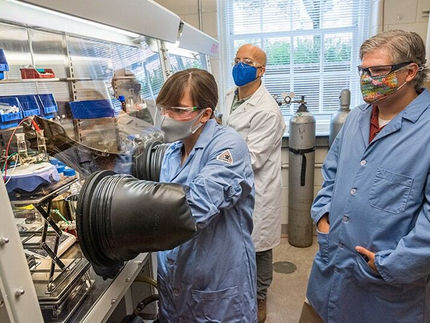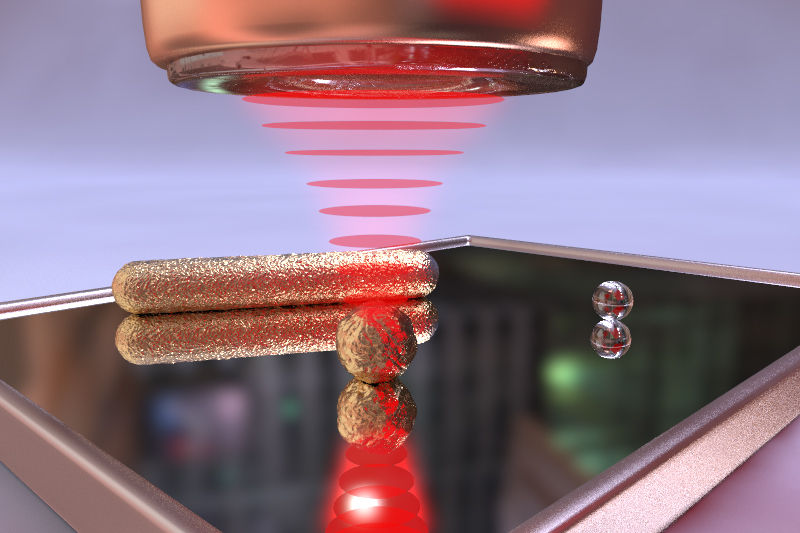New technique could enable design of hybrid glasses and revolutionize gas storage
A new method of manufacturing glass could lead to the production of 'designer glasses' with applications in advanced photonics, whilst also facilitating industrial scale carbon capture and storage. An international team of researchers report how they have managed to use a relatively new family of sponge-like porous materials to develop new hybrid glasses.
The work revolves around a family of compounds called metal-organic frameworks (MOFs). Their porous properties have led to proposed application in carbon capture, hydrogen storage and toxic gas separations, due to their ability to selectively adsorb and store pre-selected target molecules, much like a building a sieve which discriminates not only on size, but also chemical identity.
Now, a team of researchers from Europe, China and Japan has discovered that careful MOF selection and heating under argon appears to raise their decomposition temperature just enough to allow melting, rather than the powders breaking down. The liquids formed have the potential to be shaped, cast and recrystallised, to enable solid structures with uses in gas separation and storage.
Dr Thomas Bennett from the Department of Materials Science and Metallurgy at the University of Cambridge says: "Traditional methods used in melt-casting of metals or sintering of ceramics cause the structural collapse of MOFs due to the structures thermally degrading at low temperatures. Through exploring the interface between melting, recrystallisation and thermal decomposition, we now should be able to manufacture a variety of shapes and structures that were previously impossible, making applications for MOFs more industrially relevant".
Equally importantly, say the researchers, the glasses that can be produced by cooling the liquids quickly are themselves a new category of materials. Further tailoring of the chemical functionalities may be possible by utilising the ease with which different elements can be incorporated into MOFs before melting and cooling.
Professor Yuanzheng Yue from Aalborg University adds: "A second facet to the work is in the glasses themselves, which appear distinct from existing categories. The formation of glasses that contain highly interchangeable metal and organic components, in is highly unusual, as they are normally either purely organic, for example in solar cell conducting polymers, or entirely inorganic, such as oxide or metallic glasses. Understanding the mechanism of hybrid glass formation will also greatly contribute to our knowledge of glass formers in general."
Original publication
Other news from the department science

Get the chemical industry in your inbox
By submitting this form you agree that LUMITOS AG will send you the newsletter(s) selected above by email. Your data will not be passed on to third parties. Your data will be stored and processed in accordance with our data protection regulations. LUMITOS may contact you by email for the purpose of advertising or market and opinion surveys. You can revoke your consent at any time without giving reasons to LUMITOS AG, Ernst-Augustin-Str. 2, 12489 Berlin, Germany or by e-mail at revoke@lumitos.com with effect for the future. In addition, each email contains a link to unsubscribe from the corresponding newsletter.


























































